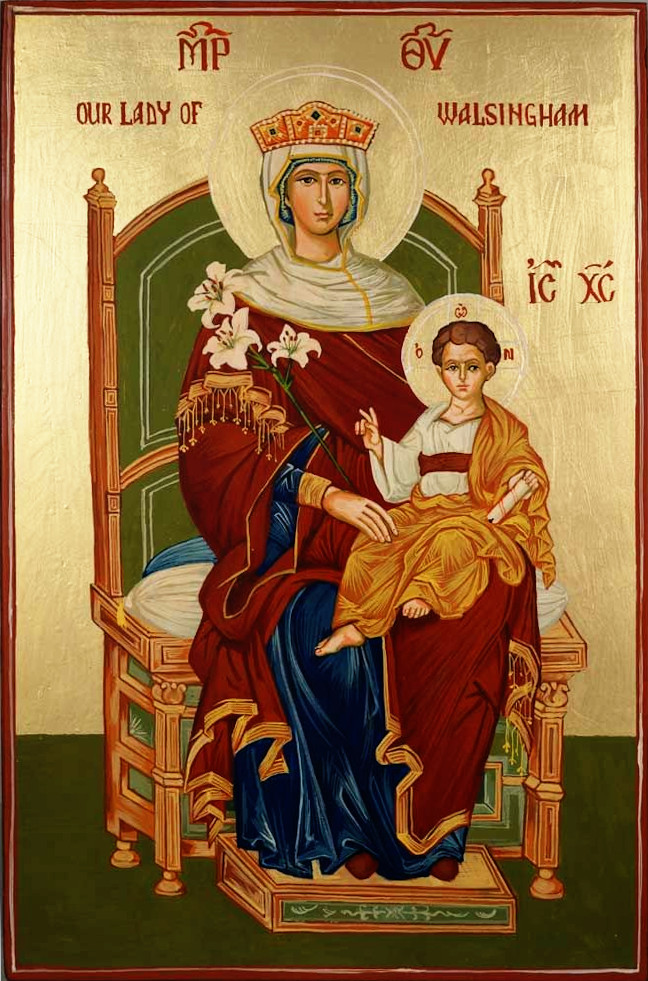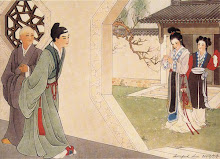Christ is Risen! Truly He is Risen!
Today is the Sunday of Pascha, the Great Feast of our Holy Orthodox Church, and the day in which we commemorate the triumphant rising of Our Lord Christ from His tomb. The first ones to see and understand what happened on this day – even as the disciples of Christ were scattered, lost and in despair at having witnessed the death of the Messiah – to bear them the good, and indeed incredible, news of Christ’s defeat of the power of death, were women: Mary Magdalene, Mary the mother of James, Salomé, Joanna, and Mary and Martha the sisters of Lazarus; our Tradition names them as the Holy Myrrh-Bearing Women, because they had come to the tomb of Christ to anoint His body in lamentation – a risky task, given that he had gone to the death of a bandit and a political enemy of Rome. What awaited them was an even greater surprise: they were witnesses to something that had never yet been demonstrated. The Messiah they thought had failed, the man they had seen crucified to death, and now wept and lamented over, had returned to life. This gift was given to the Myrrh-Bearing Women, rather than to the disciples, because the women remembered Christ even after it seemed all hope had been lost.
It is fitting, therefore, that we also commemorate on this Sunday of Pascha another woman, born over a millennium after this single and defining event in history, who throughout her life showed a similarly unflagging faith, and the bravery and inward strength of a lioness. In 1160, a daughter was born to the High King of Georgia, Giorgi III. Bagrationi, and his wife Burdukhan, Princess of Alania (described by historian Donald Rayfield as ‘strikingly beautiful’). Giorgi III. was, unlike his father, an energetic and dynamic ruler, who kept his kingdom from being swallowed up by, Seljuq and Qypchaq Turks and Khazars, and who enlisted the Armenians in freeing their own homeland from an oppressive Seljuq rule. His newborn daughter, Tamara, proved to be of the same bold and lively temper – as her father was said to have remarked at her birth, ‘a lion cub is just as good, whether male or female’. Her father’s rule, though it actively expanded the borders of Georgia, swelled the ranks of his army with Armenian and Turkic volunteers, and proved a considerable opportunity for commoners of high ability to rise through the ranks, was for these same reasons not well-greeted by the noble families of Georgia, who more than once attempted to curtail (or end) Giorgi III.’s rule – behind Giorgi’s nephew Demna and behind an ambitious Armenian nobleman named Ivane Orbeli. Giorgi had both of them put to death along with Orbeli’s kinsmen, and then in a public ceremony transferred his royal crown, girdle and sword to Tamara, his seventeen-year-old heiress, who then served as his co-ruler until his death six years later.
If her father faced a stiff resistance from the Georgian nobles for his energising and innovative rule, Tamara faced a double one: not only did she serve to legitimate that rule, but she was a woman into the bargain. Tamara and her sister Rusudan had been educated by their aunt (also named Rusudan), and the new Queen-Regnant of Georgia had acquired from her a high respect for the Church and for the authority of tradition. For the first years of her reign, she bowed meekly to the demands both of Catholicos-Patriarch Mikel IV. of All Georgia, and of the nobility. Soon after her rule began, however, she was faced with a noble rebellion under the greedy royal Treasurer Qutlu Arslan. She didn’t hesitate to detain the Treasurer while two of her lady-courtiers stalled for time, until she could hail her army to put down the rebellion for good. She was unfortunately, however, manoeuvred afterward into a singularly unhappy, purely-political, unconsummated marriage with the dissolute Yuriy Bogolyubskiy, a Russian prince of Novgorod who had been expelled from his homeland. However, on account of his bad behaviour, Tamara divorced him and expelled him from Georgia (again on her own initiative) in 1187, and married instead a man suggested to her by her aunt Rusudan: the Alanian prince Davit-Soslan. This marriage proved to be a happy and fruitful one: she had with Davit-Soslan a son (the future Giorgi IV. of Georgia) and a daughter (Rusudan), and he served both as Tamara’s co-reigning King-Consort and as the most loyal and capable of her generals.
Tamara and her generals – Davit-Soslan, along with the Kurdish brothers Zak’are and Ivane Mkhargrdzeli – mounted a wildly-successful continuation to Giorgi III.’s policies of expansion and defence of Christians in the Caucasus. The knights of Georgia, led by Davit-Soslan, utterly crushed the armies of Sultan Abu Bakr of the Ildeghizians. The armies of the Mkhargrdzeli brothers reclaimed vast swathes of Armenia and what is now eastern Turkey from the Muslim dynasts who ruled it, and destroyed the Emirate of Karsi. Under Tamara, the Kingdom of Georgia expanded to its broadest geographical extent, and claimed all the lands of the Circassians, the Alans, the Azeris and the Armenians as tributaries. Her aid in the rebellion of Trebizond against Constantinople, and its establishment as a dependent kingdom, further expanded Georgia’s influence into the Crimea and along the Anatolian Black Sea coast. Tamara was active in the use of her position and newfound prestige, to shelter vulnerable Middle Eastern Christians and pilgrims, to send missionaries all around the Caucasus and into northern Iran, and to support monasteries, hermitages, churches and hospitals as far afield as Sinai, Athos, Cyprus, Thrace and Petritsoni.
Queen Tamara could indeed be a lioness – as brave, as decisive and as driven as her father had been – but in spite of her often-bitter political wrangling with Georgian Church and nobility, her devotion to her faith and to her country were equally fierce. After her generals’ victories in Armenia, for example, the Seljuq Sultan Suleyman II. of Rūm led a large force into Georgia. His messenger approached Tamara with an insulting letter calling her a ‘simpleton of a queen’, and demanding that she surrender Georgia to him, convert to Islam and become his wife; if she refused, Suleyman would exterminate the Christians who would not convert – and she would be kept as a concubine. This demand was so outrageous that Zak’are Mkhargrdzeli punched the messenger in the face and sent him sprawling to the ground. Tamara, however, sent the messenger back with a substantial gift by way of apology, and a polite reply to this effect:
Your proposal takes into consideration your wealth and the vastness of your armies, but fails to account for Divine Judgement, while I place my trust not in any army or worldly thing but in the right hand of the Almighty God and the infinite aid of the Cross, which you curse. The will of God—and not your own—shall be fulfilled; the judgement of God—and not your judgement—shall reign!Tamara went with her trusted husband, the brothers Mkhargrdzeli, Ivane Toreli, and the brothers Shalva and Ivane Akhaltsikhe, and a great army of Georgians, Alans and Armenians, to meet the armies of Rūm and their allies. She accompanied them as far as the cave-monastery at Vardzia, and stayed there to pray for their victory before an ikon of the Holy Theotokos as the army marched toward Basiani. There they faced an army of 400,000 Muslims gathered from throughout the Caucasus, and the Georgians fought them bitterly at Basiani for days, with many of the Georgian cavalry unhorsed and fighting on foot until two wings held in reserve could swoop down and flank the Turks, utterly routing them and taking many valuable hostages. The effective prayers of Queen Tamara and the intercessions of the Holy Theotokos which kept up the courage of the Georgian knights, surely cannot be discounted!
Queen Tamara differed in some very important aspects from her father, however. For example, she would not torture, mutilate or execute her captives, and (very much resembling, rather, Prince Saint Vladimir, Baptiser of the Rus’) she opposed and forbade the cruel and dehumanising practices in her kingdom. Her piety and her generosity both were utterly sincere. Before councils with the Hierarchs of the Georgian Orthodox Church she would, as Emperor Saint Constantine had done before her at the First Ecumenical Council, honour them as a commoner, and sit keeping silence while they deliberated. She slept on a bed of hard stone and kept her prayers barefoot, which took a toll on her health. She also hand-sewed vestments for priests of the Georgian Church, donated the needlework and embroidery she did to the poor, and gave alms from the royal jewels she had inherited. In one instance, she offered a ruby-studded girdle she had done on to the ikon of the Holy Theotokos at Gelati, out of remorse for having taken too long in dressing and thus having failed to give alms to a beggar on the way.
Although she focussed many of her attentions westward – both in terms of almsgiving and in terms of expanding Georgia’s influence along the Black Sea Coast – Tamara was very much an ‘Oriental’ ruler, looking culturally especially toward Persia for her primary influence. Both her mother and her husband were Iranian-speaking Alans; her generals the brothers Mkhargrdzeli were Christianised Iranian-speaking Kurds. In regard to her humane compunctions, her territorial ambitions and her self-designated role as the protector of religious liberties in her region of the world, her rule mirrors to a surprising extent that of Kourosh-e Kabir – Cyrus the Great. She styled herself, as her father had done before her, with the Persianate titles Shāhanshāh and Shirvanshāh. She, having inherited the striking exotic beauty of her Alan mother, has therefore always been portrayed in Georgian art and iconography according to a Persian standard of beauty. And much of the copious cultural output of her rule of Georgia – particularly the epic poetry of Shota Rustaveli – owed a great deal to Persian forms and inspirations.
Queen Tamara ruled over what is rightly considered to be the Golden Age of the mediæval Kingdom of Georgia, and as Georgia’s Queen-Regnant she may be characterised as devout, brave, humane and kind to the poor. Before she reposed, God gave to Tamara a sign and welcomed her into His Kingdom, and into His hands at the last she entrusted the people and the kingdom which, for a short time, she safeguarded and kept for His sake, and also her soul.
O Thou whom thy people called a king in justice and truth,Sources:
The father of orphans and the judge of widows,
Thou sun which shone on the Georgian land,
Thou who spent all thy strength defending thy kingdom,
Rise up, O Tamara, and defend us now also,
And by thine intercessions with Christ, save us from sufferings.
Holy Transfiguration Monastery. ‘Kontakion of Tamara, Queen of Georgia’. Brookline, MA, Holy Transfiguration Monastery, 2016.
Hunter, Ryan. ‘Queen, Saint and Stateswoman: Commemorating the “Lion of Georgia”’. On Juicy Ecumenism, last modified 2 May 2014.
Machitadze, Archpriest Zakaria. ‘Holy Queen Tamar (†1213)’. In Lives of the Georgian Saints. Platina, CA, St. Herman’s Press, 2006.
Rayfield, Donald. Edge of Empires: a History of Georgia. London, Reaktion Books, 2012.














She is not a Catholic saint, but I am very devoted to Satin Tamara. I honour her with prayer every Thursday.
ReplyDeleteExcellent! I'm still trying to find a decent icon of her, preferably one written in Georgian or Arabic, but I haven't located one yet.
ReplyDelete